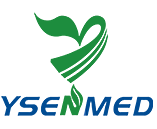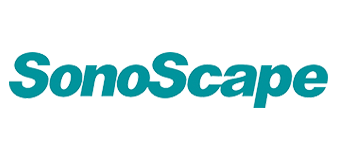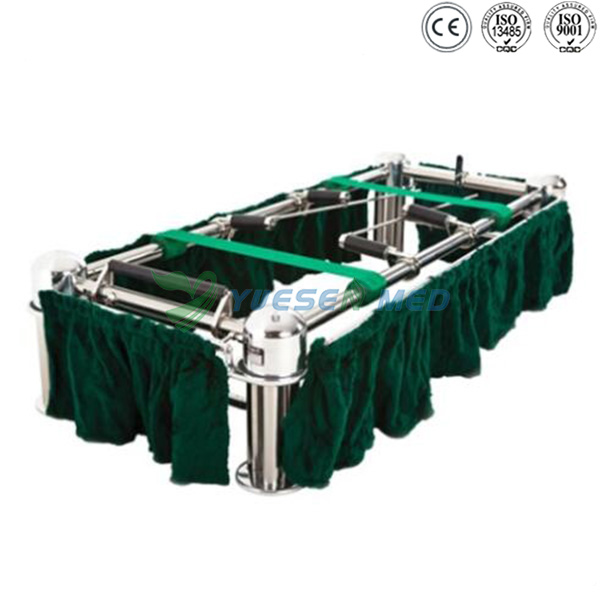Title: Unveiling the Power of High Flow Oxygen Therapy Machines in Treating Respiratory Conditions
Introduction to High Flow Oxygen Therapy:
High Flow Oxygen Therapy Machines have emerged as a revolutionary tool in the management of respiratory conditions, offering a non-invasive and effective approach to improving oxygenation and alleviating respiratory distress. This article explores the profound impact of High Flow Oxygen Therapy on patient outcomes, the mechanism of action behind its efficacy, and its applications across various respiratory conditions.
Understanding High Flow Oxygen Therapy:
High Flow Oxygen Therapy involves the delivery of heated and humidified oxygen at high flow rates through specialized nasal cannulas or masks. Unlike conventional oxygen therapy, which relies on low-flow delivery systems, High Flow Oxygen Therapy provides significantly higher oxygen concentrations while maintaining patient comfort and tolerance. By delivering oxygen at flow rates exceeding the patient's peak inspiratory flow, this therapy ensures consistent and reliable oxygenation, thereby reducing the work of breathing and improving respiratory mechanics.
Mechanism of Action:
The efficacy of High Flow Oxygen Therapy stems from its unique mechanism of action, which addresses key physiological principles underlying respiratory distress. Firstly, the heated and humidified oxygen helps to optimize mucociliary clearance and reduce airway inflammation, promoting airway patency and secretion clearance. Additionally, the high flow rates generate positive airway pressure, which enhances lung recruitment, reduces atelectasis, and improves ventilation-perfusion matching. This combination of physiological effects leads to improved oxygenation, reduced respiratory rate, and enhanced respiratory comfort for patients with acute or chronic respiratory conditions.
Applications Across Respiratory Conditions:
Acute Respiratory Failure: High Flow Oxygen Therapy has emerged as a cornerstone in the management of acute respiratory failure, including conditions such as pneumonia, acute exacerbations of chronic obstructive pulmonary disease (COPD), and acute respiratory distress syndrome (ARDS). By providing optimal oxygenation and respiratory support, High Flow Oxygen Therapy reduces the need for invasive mechanical ventilation and mitigates the risk of ventilator-associated complications.
Chronic Respiratory Conditions: In patients with chronic respiratory conditions such as COPD, bronchiectasis, and cystic fibrosis, High Flow Oxygen Therapy offers a valuable adjunct to conventional therapies. By improving oxygenation and reducing respiratory effort, this therapy enhances exercise tolerance, reduces dyspnea, and improves quality of life for individuals living with chronic respiratory conditions.
Postoperative Care: High Flow Oxygen Therapy has demonstrated efficacy in postoperative care settings, particularly following thoracic and upper abdominal surgeries. By facilitating early mobilization, enhancing lung expansion, and promoting secretion clearance, High Flow Oxygen Therapy helps to prevent postoperative atelectasis and respiratory complications, thereby expediting recovery and reducing hospital length of stay.
Benefits of High Flow Oxygen Therapy:
Improved Oxygenation: High Flow Oxygen Therapy delivers higher concentrations of oxygen than conventional oxygen therapy, ensuring adequate oxygenation even in patients with severe respiratory compromise.
Enhanced Patient Comfort: The heated and humidified oxygen delivered by High Flow Oxygen Therapy is well-tolerated by patients, minimizing nasal dryness, discomfort, and mucosal irritation commonly associated with conventional oxygen therapy.
Reduced Work of Breathing: By providing positive airway pressure and reducing airway resistance, High Flow Oxygen Therapy decreases the work of breathing, alleviating respiratory distress and fatigue in patients with respiratory conditions.
Non-Invasive Nature: Unlike invasive mechanical ventilation, High Flow Oxygen Therapy is non-invasive, preserving patient autonomy, communication, and mobility while providing effective respiratory support.
Potential for Avoidance of Intubation: In cases of acute respiratory failure, High Flow Oxygen Therapy may obviate the need for invasive mechanical ventilation, reducing the risk of ventilator-associated complications and improving patient outcomes.
Conclusion:
High Flow Oxygen Therapy Machines represent a paradigm shift in the management of respiratory conditions, offering a non-invasive and patient-centric approach to improving oxygenation and respiratory support. With its unique mechanism of action, broad applicability across respiratory conditions, and numerous clinical benefits, High Flow Oxygen Therapy has become an indispensable tool in the armamentarium of healthcare providers. As research and technology continue to advance, the role of High Flow Oxygen Therapy in optimizing respiratory care and enhancing patient outcomes will only continue to grow, ushering in a new era of respiratory medicine characterized by improved efficacy, patient comfort, and quality of life.
Expanding on the Benefits and Advantages:
6. Versatility in Settings: High Flow Oxygen Therapy machines offer versatility in their application, as they can be used in various healthcare settings including hospitals, long-term care facilities, and home care settings. This versatility ensures that patients receive consistent and effective respiratory support across different stages of their care continuum.
Reduction in Healthcare Costs: By mitigating the need for invasive mechanical ventilation, High Flow Oxygen Therapy can contribute to significant cost savings for healthcare systems. Avoidance of intubation and ventilator-associated complications not only reduces direct medical costs but also minimizes the burden of prolonged hospital stays and intensive care unit admissions.
Enhanced Patient Outcomes: Studies have demonstrated that High Flow Oxygen Therapy is associated with improved patient outcomes, including reduced mortality rates, decreased incidence of respiratory failure, and shorter recovery times. By optimizing respiratory function and facilitating early mobilization, this therapy helps patients regain independence and achieve better overall health outcomes.
Adaptability to Patient Needs: High Flow Oxygen Therapy machines offer customizable settings to accommodate the specific needs and preferences of individual patients. Adjustable flow rates, FiO2 settings, and interface options allow healthcare providers to tailor therapy parameters to each patient's respiratory status, ensuring optimal comfort and efficacy.
Safety Profile: High Flow Oxygen Therapy has been shown to have a favorable safety profile, with minimal risk of adverse events when used appropriately. Unlike invasive mechanical ventilation, which carries inherent risks such as ventilator-associated pneumonia and barotrauma, High Flow Oxygen Therapy poses lower risks of complications, making it a preferred option for many patients and clinicians.
Promising Research and Innovation: Ongoing research and innovation in the field of High Flow Oxygen Therapy continue to expand our understanding of its mechanisms of action and potential applications. Emerging technologies, such as integrated monitoring systems and predictive analytics, hold promise for further optimizing therapy delivery and individualizing treatment strategies based on patient-specific parameters.
Conclusion:
High Flow Oxygen Therapy machines have revolutionized the management of respiratory conditions, offering a safe, effective, and versatile alternative to conventional oxygen therapy and invasive mechanical ventilation. With their unique combination of physiological benefits, patient-centered approach, and proven clinical efficacy, these machines have become indispensable tools in the arsenal of respiratory care providers worldwide. As healthcare continues to evolve, High Flow Oxygen Therapy will remain at the forefront of respiratory medicine, driving improved patient outcomes, enhanced quality of care, and greater cost-effectiveness across diverse clinical settings. By harnessing the power of high-flow oxygen delivery, we can continue to transform the landscape of respiratory care, ensuring better health and well-being for patients now and in the future.



